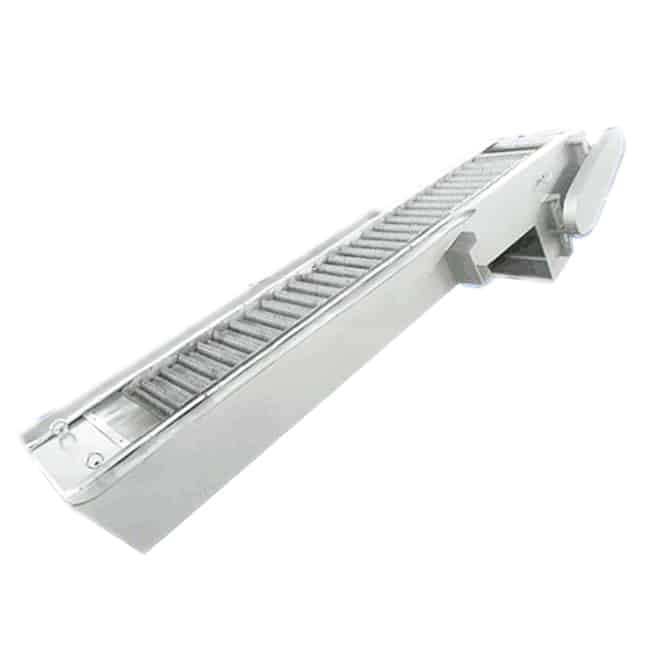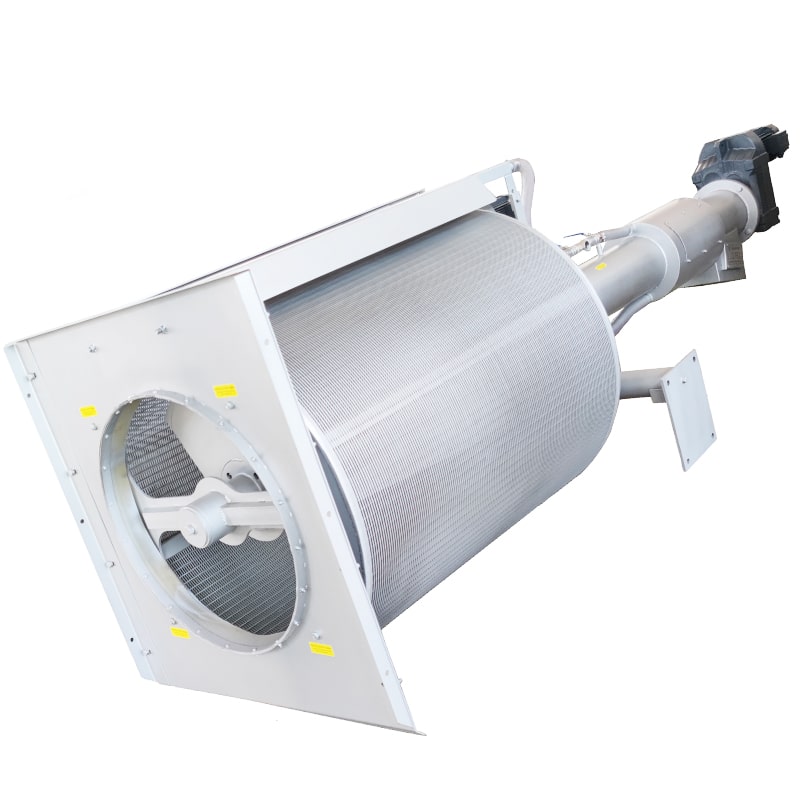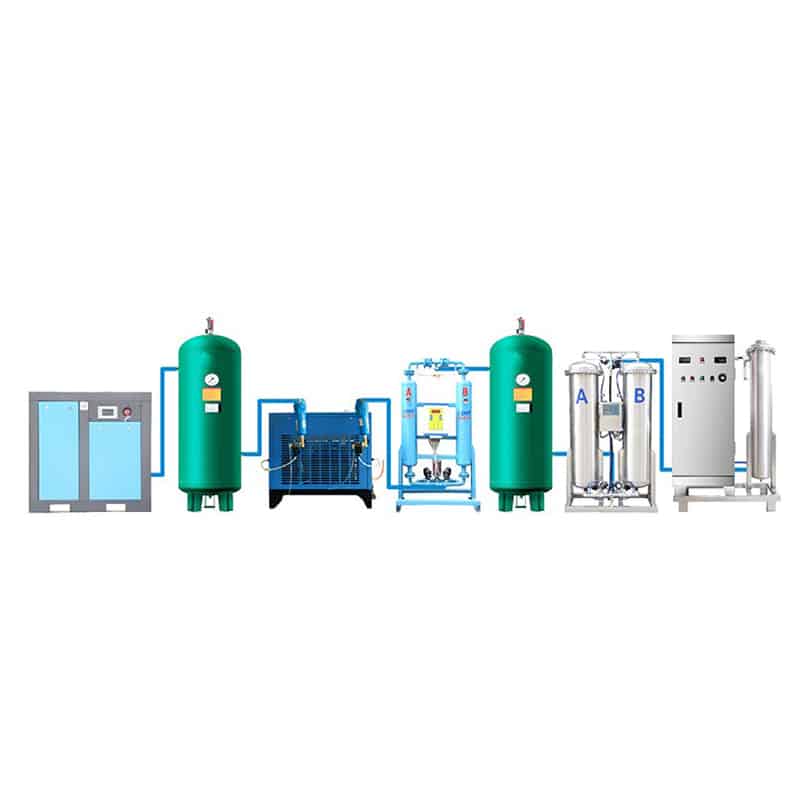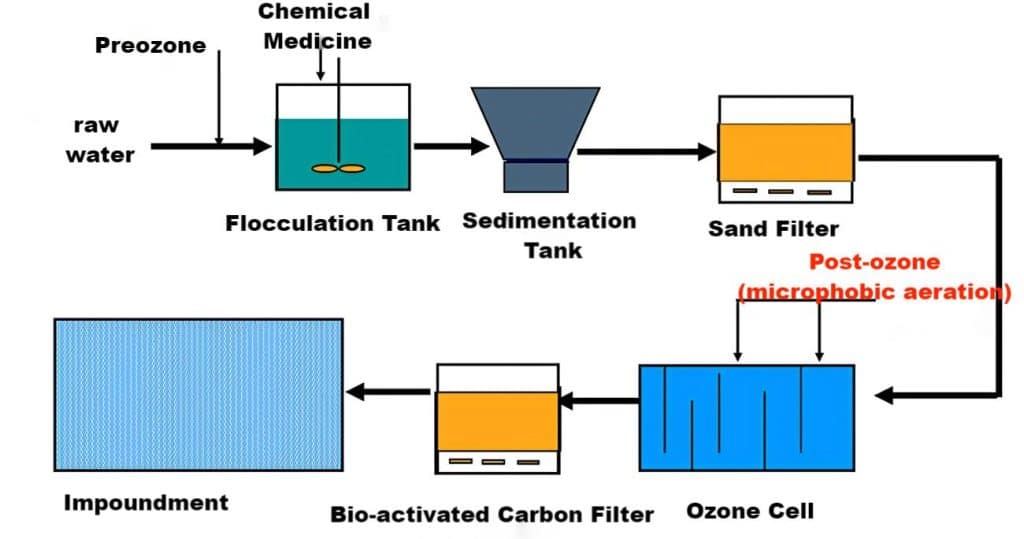Domestic Sewage
What is domestic sewage?
Domestic sewage is wastewater containing pollutants generated by human daily life, work and production activities. This sewage mainly comes from residential areas, commercial areas, office areas, schools, hospitals and other places, this includes effluent discharge from homes, schools, office buildings, restaurants, hotels and other places. Domestic sewage contains pollutants such as organic matter, nutrients, microorganisms, oils and fats, and hazardous substances, which may cause serious environmental and health impacts if not properly treated.

What are the effects of untreated domestic sewage?
- Water pollution: Domestic sewage contains organic matter, nutrients, microorganisms, heavy metals and other pollutants, and direct discharge into water bodies can lead to deterioration of water quality, trigger eutrophication, algae outbreaks and other problems, affecting the balance of aquatic ecosystems.
- Health risks: Domestic sewage may carry pathogens and germs, such as bacteria, viruses, parasites, etc. Direct contact with or consumption of contaminated water may lead to waterborne diseases, such as diarrhea, cholera and dysentery.
- Soil pollution: If domestic sewage is discharged into the soil, pollutants may penetrate into the soil, affecting the quality of the soil and reducing soil fertility, which in turn affects crop growth and food safety.
- Odor and landscape impacts: Domestic sewage contains organic matter and oil and grease, etc., which may produce unpleasant odors after discharge, affecting the odor and landscape of the surrounding environment, and causing a nuisance to the quality of life of the residents.
- Impacts on fisheries and aquaculture: Water bodies affected by the discharge of domestic sewage may lead to a decrease in the oxygen content of the water, affecting the survival of aquatic organisms and adversely affecting fisheries and aquaculture.
Classification Of Domestic Sewage
Different types of domestic sweage require different treatment methods to ensure that the impact on the environment and human health is minimized.
- Black water: Also known as sanitary sewage, mainly from toilets, bathrooms, kitchens and other domestic water and excreta mixture. Black water usually contains organic matter, nitrogen, phosphorus and other pollutants, and requires more stringent treatment before it can be safely discharged or reused.
- Grey water: Grey water refers to the drainage water from life other than toilets, including laundry, dishwashing, hand washing, showering and other wastewater. Greywater contains a small amount of organic matter and pollutants, but compared to blackwater, it is cleaner and can be used for flushing toilets, watering plants, etc. after simple treatment.
- Yellow water: Yellow water refers to urine from toilets, which is usually treated separately from black water. Yellow water contains nutrients such as nitrogen and phosphorus, which can be recycled and utilized through special treatment methods.
- White water: White water is water that has been treated to meet drinking water standards. It can come from the treatment of black water in sewage treatment plants, and after multi-stage purification it reaches a safe water quality that can be used directly for drinking or other purposes.
Difference Between Wastewater And Domestic Sewage
| Specificities | Wastewater | Domestic Sewage |
| Source | Industrial, agricultural, commercial, utility, other industries | Residential living, homes, schools, restaurants, etc. |
| Ingredient | A wide range of organic and inorganic pollutants, including chemicals, heavy metals, industrial wastes, etc | Primary organic matter, nitrogen, phosphorus, from activities such as toilets, bathing, kitchens, etc. |
| Treatment | Complex physical, chemical treatment processes to remove pollutants and hazardous substances | Treatment is generally required to remove organic matter and nutrients |
| Environmental Impact | Contains more hazardous substances and chemicals | Degradation of organic matter and release of nutrients leading to eutrophication of water bodies |
| Example | Industrial wastewater, agricultural drainage, commercial wastewater, mine drainage, etc. | Toilets, bathing, laundry, kitchen drainage, etc. |
Wastewater and sewage are two different terms that are often used interchangeably.
Classification of sewage treatment products
They can be categorized into two main types, industrial and domestic treatment, the main difference between a domestic wastewater treatment plant and an industrial wastewater treatment wide is that the industrial treatment takes place on-site, whereas a domestic sewage treatment plant treats wastewater from the surrounding area.
Although these types of wastewater treatment plants are used to treat different types of wastewater, the treatment process at any given treatment plant is very similar. The only difference is that industrial treatment focuses more on removing chemicals, while domestic treatment tends to remove organic matter.
Constituents In Domestic Sewage
| Ingredients | Content Range |
| Organic Matter | 200 – 800 mg/L |
| Suspended Matter | 100 – 400 mg/L |
| BOD5 | 150 – 400 mg/L |
| COD | 250 – 800 mg/L |
| Ammonia | 10 – 50 mg/L |
| Total Nitrogen | 20 – 100 mg/L |
| Total Phosphorus | 2 – 10 mg/L |
| Grease | 5 – 20 mg/L |
| PH | 6.5 – 8.5 |
| Water Temperature | Depends on environmental conditions |
| Suspended bacteria | Depends on sanitary conditions |
| Pathogens | Depends on sanitary conditions |
Domestic Sewage Treatment Process
Domestic sweage treatment is a complex process that typically consists of multiple steps and process units to ensure that wastewater is effectively purified and treated prior to discharge.
Pre-Treatment
Domestic sweage first passes through pre-treatment units such as coarse screens, gratings and sedimentation tanks to remove larger suspended solids and sediments. KUOSI multi rake bar screen preliminary filtration removes coarse solids from untreated sewage, and then using rotating drum screen sieve effectively removes smaller suspended particles from domestic sweage and improves the quality of the water. It is suitable for treatment of larger flows.


Primary Processing
In primary treatment, the sewage enters the sedimentation tank or primary settling tank, in which suspended solids will settle in a static environment and form sludge. Adding an appropriate amount of clarifier can help to quickly coagulate fine solid particles and accelerate their settlement to the bottom, optimizing the wastewater treatment process, reducing the load of suspended solids and improving the solid-liquid separation efficiency.
Biological Treatment
Biological treatment is one of the core steps in domestic sewage treatment, usually using biological reactors such as activated sludge, aerobic digestion and fixed biofilm methods. Biodegradation is carried out and organic matter is converted into sludge and gas in activated sludge tanks to reduce biochemical oxygen demand and ammonia nitrogen, etc.
| Treatment Method | Principle | Application Scenario |
|---|---|---|
| Activated Sludge Process | Aerobic microorganisms decompose organic matter under aeration | Community centralized systems / small treatment stations |
| Biological Contact Oxidation | Microorganisms attach to media forming biofilm to treat organic matter | Household use / underground integrated equipment |
| MBR (Membrane Bioreactor) | Biological degradation combined with membrane filtration for high-quality effluent | High-end residences or scenarios with high reuse demands |
Secondary Treatment
Sewage after biological treatment may still contain residual pollutants. Further secondary treatment may include processes such as sedimentation, filtration and oxidation to further reduce the concentration of pollutants.
Tertiary Treatment
For specific required discharge standards, tertiary treatment such as advanced oxidation and activated carbon adsorption may be required to further improve the quality of the effluent.
Process approach:
- Denitrification + chemical phosphorus removal (if nitrogen and phosphorus removal is required);
- Sand filtration/activated carbon adsorption: removing fine suspended matter and dissolved pollutants;
- Membrane filtration (UF/RO): to realize water reuse.
Sterilize
Sterilization is done to kill potential pathogens and is usually done using chlorine, UV radiation, and ozone. Ozone generators can kill most pathogens.


Sludge Treatment
Treatment of sludge settled from all stages, reduction, stabilization and proper disposal.
Treatment method:
- Sludge thickening + dewatering.
- Can be sent to sludge drying/landfill/composting/incineration.
Is domestic sewage biodegradable?
Organic substances in domestic sewage can be biodegraded to reduce their pollution of the environment. Domestic sewage contains a large amount of organic matter, such as food residues, oil and grease, feces, etc., which can be decomposed by microorganisms and converted into harmless substances such as water and carbon dioxide.
Biodegradation is a natural treatment process involving a variety of microorganisms such as bacteria, fungi and other microorganisms. In wastewater treatment plants, biological treatment processes such as aeration tanks, aerobic biofilters, and anaerobic digesters are commonly used to utilize these microorganisms to degrade organic pollutants in domestic wastewater. These microorganisms break down organic matter into simpler compounds through metabolism under suitable environmental conditions and eventually convert them into harmless substances.
Biodegradation not only reduces organic pollution, but also reduces chemical oxygen demand (COD) and BOD in wastewater, and improves the water quality of water bodies. However, the efficiency of biodegradation is affected by a number of factors, such as temperature, oxygen supply, and microbial species and numbers. Therefore, to ensure effective biodegradation, the wastewater treatment process needs to be monitored and managed to maintain suitable environmental conditions to support microbial growth and activity.
How do you combat domestic sewage?
- Reduction of emissions at source: Reducing wastewater discharges and promoting the rational use of water resources and water conservation measures can effectively reduce the generation of domestic sewage.
- Construction of sewage treatment facilities: Construct and maintain sewage treatment facilities, including pre-treatment, primary treatment, secondary treatment and other processes, to ensure that domestic sewage is properly treated before discharge and to reduce the discharge of pollutants.
- Environmental monitoring: Regularly monitor the impact of domestic sewage discharge on the surrounding environment to ensure that the quality of discharged water meets the relevant standards.
- Technological innovation: Promote innovation in sewage treatment technology, develop more efficient, energy-saving and environmentally friendly treatment technology and equipment, and improve the treatment effect of domestic sewage.
Summary
The importance of domestic sewage treatment lies in protecting the environment, maintaining the health of water bodies, and preventing the effects of water pollution on ecosystems and human health. Effective domestic sewage treatment helps to reduce pollution and waste of water resources, safeguard the supply of clean drinking water, maintain ecological balance, and promote sustainable development.KUOSI, as a leading manufacturer in the water treatment industry, our wide range of product lines include filter presses, screw press, paddle dryer, dissolved air floatation dystems, roots blower, sodium hypochlorite generators, and grit classifier. We have a professional technical team, please feel free to contact us for a comprehensive solution to your water treatment needs.
